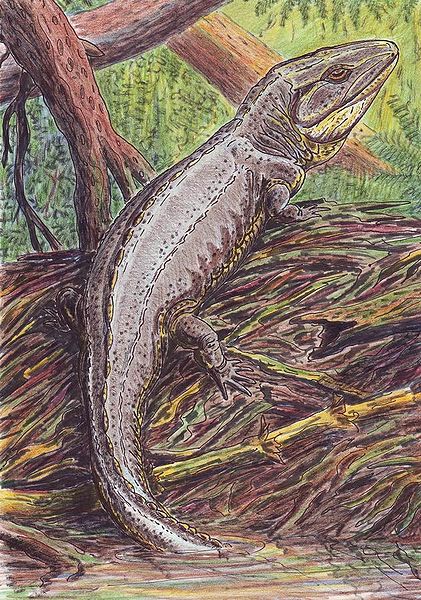 |
 |
 |
 |
 |
Produced
by the Population Genetics and Evolution class, Furman University |
||||
 |
 |
 |
 |
 |
Produced
by the Population Genetics and Evolution class, Furman University |
||||
 |
The
Carboniferous: Anthracosaurs |
 |
||
| Anthracosaurs
were one of the first groups of tetrapods to colonize the land. They were
descended from aquatic tetrapods that walked at the bottom of rivers and
swamps. These tetrapods split into the aquatic or semi-aquatic ancestor
of modern amphibians and the terrestrial anthracosaurs (Cofrin Center
for Biodiversity 2004). The anthracosaurs were a group of labyrinthodont
amphibians with a long, eel-like body and a deep skull. The less sprawling
body plan gave them increased agility (Hoe et al. 1996). The adaptation of having an amniotic shell is very important for terrestrial life and it seems that anthracosaurs might be an early ancestor of the amniotes because of structural similarities with later amniotes (Carroll 2001). However, the lack of evidence makes classification of anthracosaurs difficult and impedes our ability to understand the relationship between antracosaurs and amniotes (Carroll 2001). Page by Laura Snyder |
 |
| Proterogyrinus, an Anthracosaur. From: Wikipedia |
|
|
Hoe A, Jusay A, Mayberry R, Yu C. 1996. Life of the carboniferous. University of California Museum of Paleontology. Accessed March 4, 2010. Available from: Carroll RL. 2001. The origin and early radiation of terrestrial vertebrates. J Paleontol. 75:1202-1213. Cofrin Center for Biodiversity. 2004. Amphibians and Reptiles. University of Wisconsin-Greenbay. Accessed March 4, 2010. |